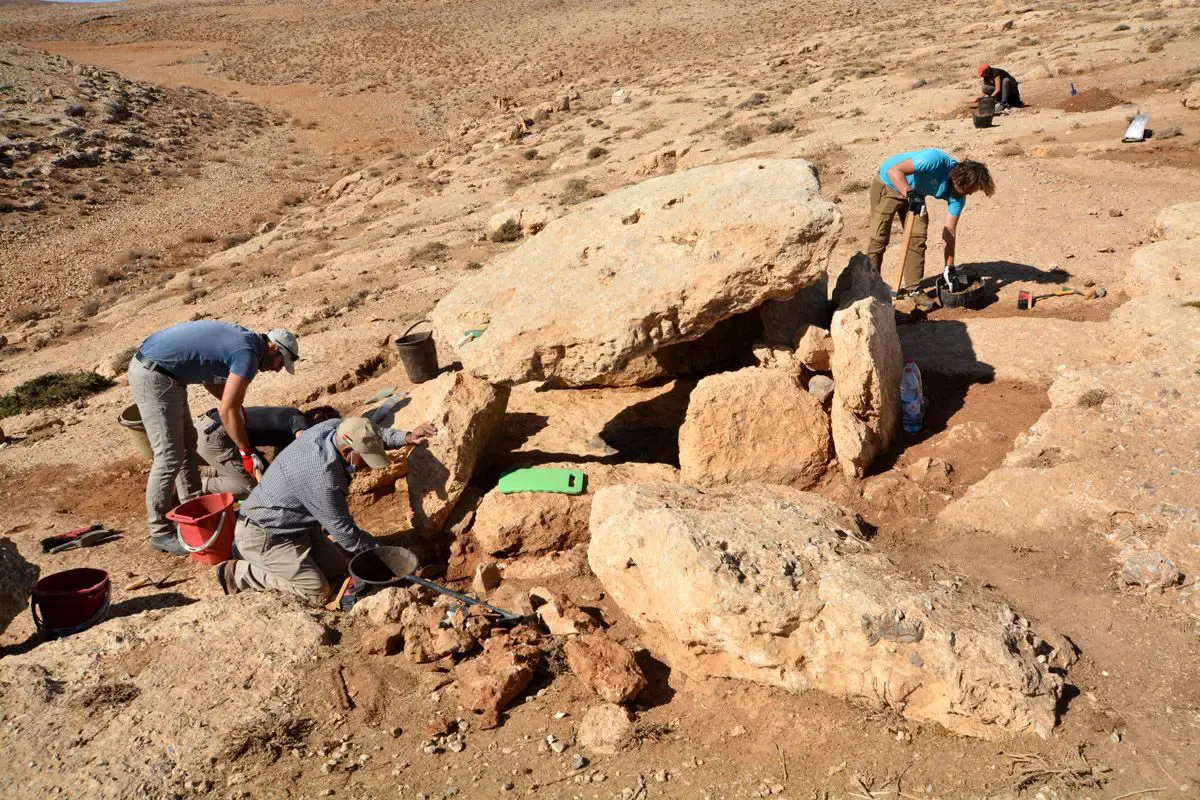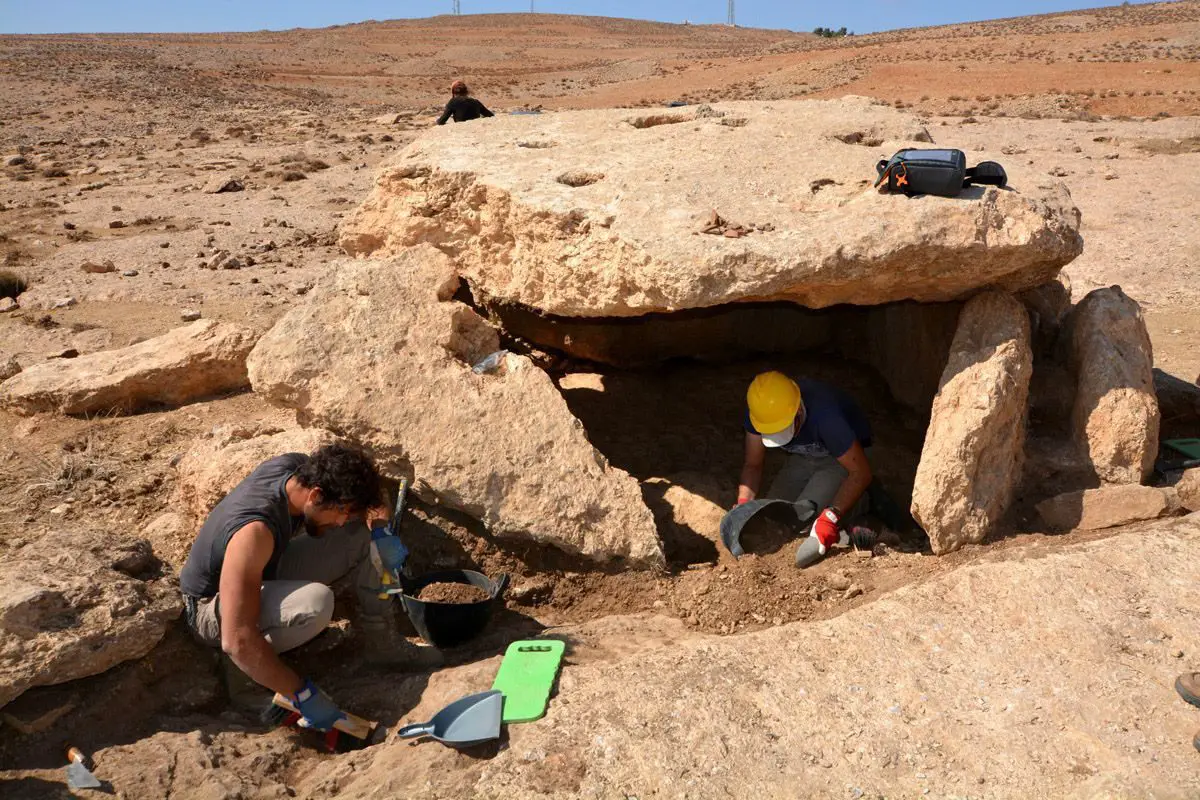Studies by archaeologists from the Jagiellonian University reveals new findings on the Jordanian megaliths, dating from 5,000 years ago.
The word dolmen entered archaeology when Théophile Corret de la Tour d’Auvergne used it to describe megalithic tombs in his Origines gauloises (1796).
Dolmens are found throughout the world, generally consisting of tomb-like structures consisting of two or more megaliths placed vertically in the ground, capped by a large flat horizontal capstone or “table”.
The researchers were studying the dolmen fields located near the village of Shawbak in the north-western edge of the Ma’an Governorate in Jordan. Excavations found traces of pottery vessels, flint tools, and bone fragments from the deceased who were likely interred.
The archaeologists were surprised to find several unfinished dolmens that were abandoned at different stages of construction, allowing the team to deduce how they were built.

Dr Piotr Kołodziejczyk said: “Thanks to primitive tools probably made of wood and simple techniques involving carving off stone blocks from the ground, lifting them and then supporting them with smaller ones, it was possible to erect these fascinating structures rather quickly. We now need to calculate their weight in order to figure out how many builders it took. The largest of those stone blocks can weigh up to several dozen tonnes”.
The discovery of a wall surrounding the dolmens, as well as a several-metre deep well in the vicinity, has led the researchers to propose that the dolmens may have not only served as burial sites, but also places of ritualistic worship as well as landmarks.
“In one of the dolmens, we’ve found a grave and several items, most likely buried alongside the person. We hope that lab tests will allow us to determine their time of burial, sex, health and ethnicity. Maybe the discovery will bring us closer to solving the mystery of the Jordanian megaliths” added Kołodziejczyk.
Header Image Credit : Biuro Prasowe UJ





